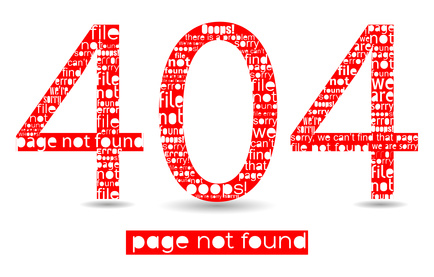Launching a new website is exciting – you’ve perfected the design and written awesome content but are you really ready to show it to the world?

Before your website goes live you MUST ensure you test the site thoroughly. I don’t just mean clicking through the pages to make sure they look nice but checking it THOROUGHLY, making sure everything works, all links go to the right places etc.
Here’s a checklist for you to follow to ensure your website is ready to be let loose on the internet.
- What’s your deadline?
If you have a deadline, be prepared to move it. There will be a number of people working on your website including developers, copywriters and testers, each trying to meet their own targets, so it’s easy for deadlines to slip. Schedule extra time in your project plan to allow time slippages so you can meet your planned go-live date.
- Secure your URL
The URL is fundamental to your website and your business. If you have a specific website address in mind then secure it as soon as possible, before someone else buys it. Your URL should be simple and easy for people to remember (not too many hyphens, or too long) and obviously make it relevant to your business!
- Site layout
Does your website lend itself to simple navigation and allow visitors to easily find what they are looking for? If you have to click more than 2-3 times to find information then research shows that people will often give up and look elsewhere. User experience is vital so don’t tuck information away so it can’t be found. If necessary just put your main messages on your site and use ‘call to actions’ for people to contact you if they require further information – if they are interested enough they will.
- Content
Does your content say what you want it to say? Short, sharp bursts of information is much better than reams and reams of text. Your text should be informative and relevant and tell visitors what they want to know. Think about why you visit a website – to find information right? So, think from a visitors point-of-view. Does your site answer your questions and the reason you went there in the first place?
- Spelling and grammar
You’ve written some great content but how’s the spelling and grammar? Ensure everything is written in the right context and words are spelled correctly. It’s said that people make a decision whether to stay on a website within the first 60 seconds, so make sure people stay on yours. Poorly written text and misspelt words do not give a good impression of your site or your business.
- Forms and links
Check all forms and links are working and go to the places they are meant to be going to. Nothing is more frustrating than clicking a link and it not going anywhere.
- Design
Does the design reflect your business? It might be an all singing and all dancing website design using the latest trends, but does it suit your business? Your website should take on your corporate image. If you are a well-established business your customers will be familiar with your logo, corporate colours, tag-lines etc. It would be unwise to produce a website that had no association with your business – this would just be confusing.
- Legal pages
There are no laws to say a website needs a legal page, but as a rule legal pages are the norm and it is a good idea to have one. You will have to decide which legal pages are appropriate for your site, but legal pages for websites include things like:
- Privacy policies
- Copyright notices
- Terms and conditions of use
- Disclaimers
- Accessibility information
- Abuse or complaints contact information
- Trademarks
- Patents
- Corporate policies
- Favicon
Make sure your website has a favicon – a small icon associated with your website that appears in the location bar of the browser. It will make your site easy to identify among favourite lists and bookmarks.
- Images
If you are using images on your site (and I highly recommend you do!) make sure you have permission to use them (if they are not your own) and sized correctly. Some images are uploaded onto websites that have not been resized for use on a webpage and they can take an age to load.

- 404 error
Hopefully nothing will go wrong with your site, but don’t forget the all-important 404 page – a standard response that tells the user they have clicked on a broken link.
- Defensive design
A good website designer will assume users will make mistakes, and to account for this they use defensive design strategies, or contingency design. Defensive design anticipates both user and website error. It helps avoid errors occurring and gets the user back on track. The most common points of failure are forms, search, address bar and server issues.
- Testing
Website testing is vitally important. Check your site thoroughly ensuring everything is working correctly. It’s easy to miss something so here’s a quick checklist:
- Links
- Forms
- Payment systems
- Menus
- Multi-device ready
We live in a world where websites are viewed on a number of different devices, so make sure yours is mobile friendly.
Testing and checking shouldn’t stop after you have launched your website. Keeping your website fresh and up-to-date will do wonders for your search engines results and ensure excellent user experience is maintained.
Plesilium Ltd offer bespoke website design and development. For more information contact info@plesilium.co.uk

